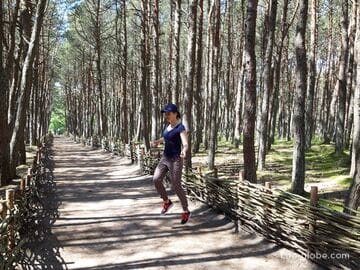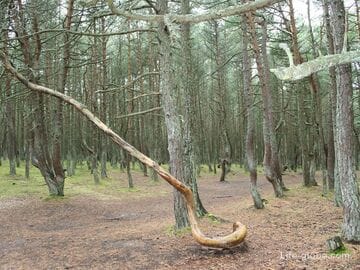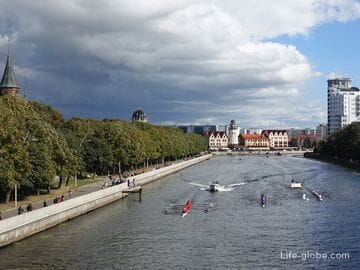Efa Height is one of the most famous and visited natural attractions of the Curonian Spit (Kaliningrad Region, Russia).
The height of Efa is the highest point of the Curonian Spit, where there are several observation platforms.
The height of Eph is not a dune. The height of the Eph is the highest point of the Orekhovaya dune (German name: Petsch). The height was named "Efa" in honor of the dune inspector Franz Efa, whose activity was devoted to the study and consolidation of the mobile sands of the Curonian Spit; it was he who introduced the method of afforestation of moving sand dunes so that the dunes would not disperse, losing sand and, thereby, did not fill up the nearby residential settlements.
Orekhovaya Dune is one of the highest dunes in Europe. The highest point of the dune, located at an altitude of 62 meters, is the height of Efa. Being on the top of the dune, you can hear the famous "singing sands".
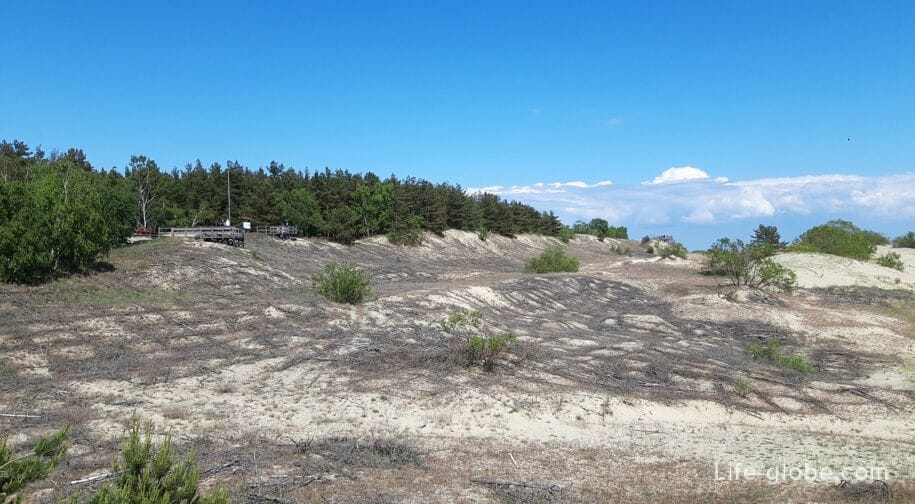

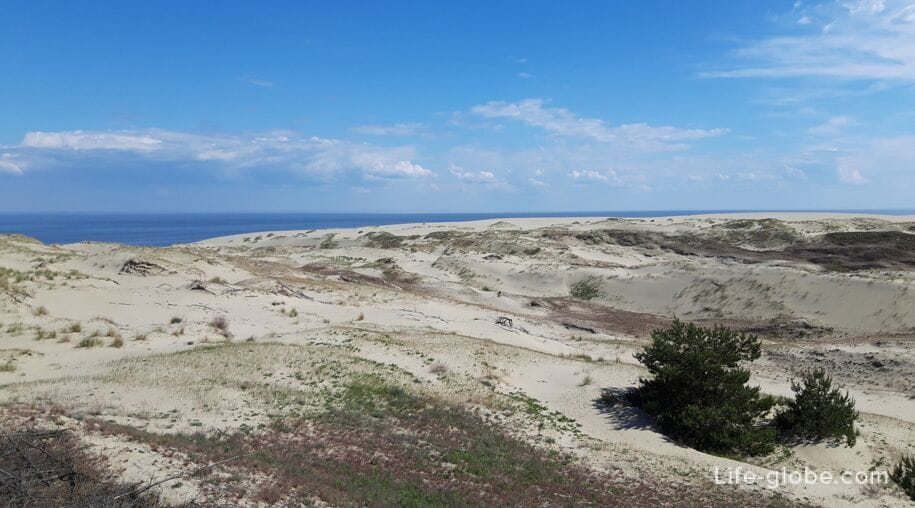
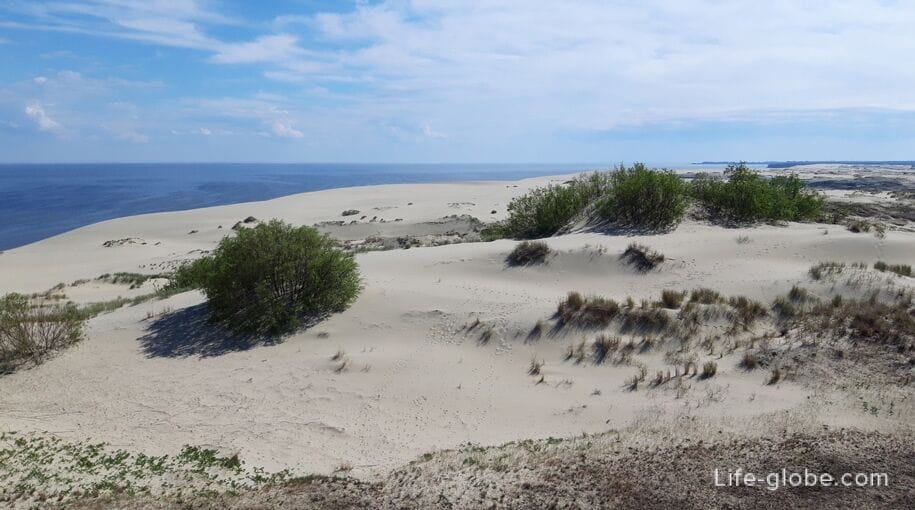
The height of the Efa is a public ecological trail (hiking route), with a length of 2.8 kilometers, which runs along a part of the Curonian Spit - on 42.2 kilometers of the spit, 2 kilometers from the village of Morskoye.
The height of the Efa is located in the direction of the Kursk Bay from the road 27A-015 (to the right of the road, if you move from Zelenogradsk). There will be an information sign on the road.
Near the beginning of the route there is a Parking lot, there is a mini-market with souvenir shops, cafes and toilets.
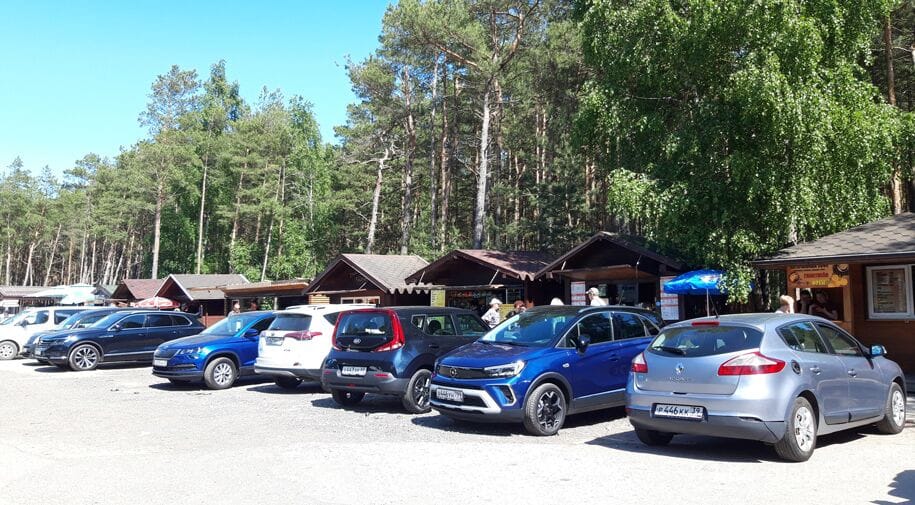
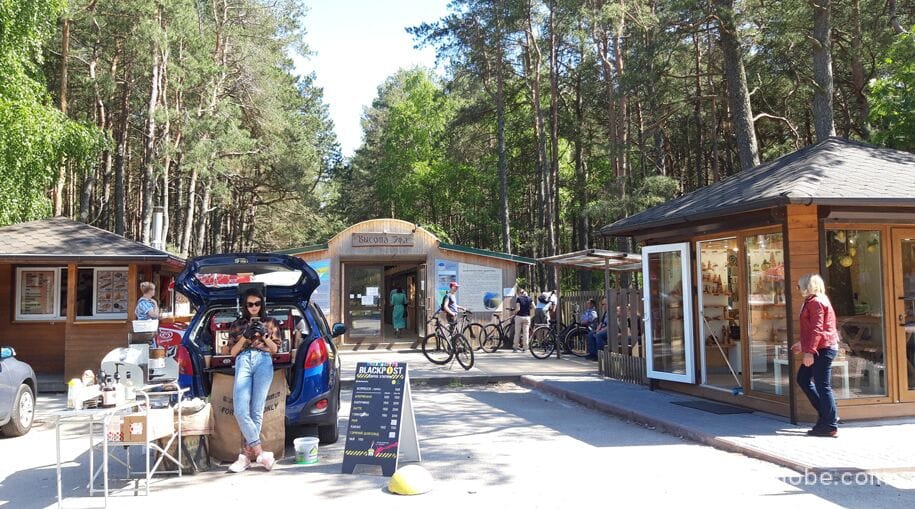

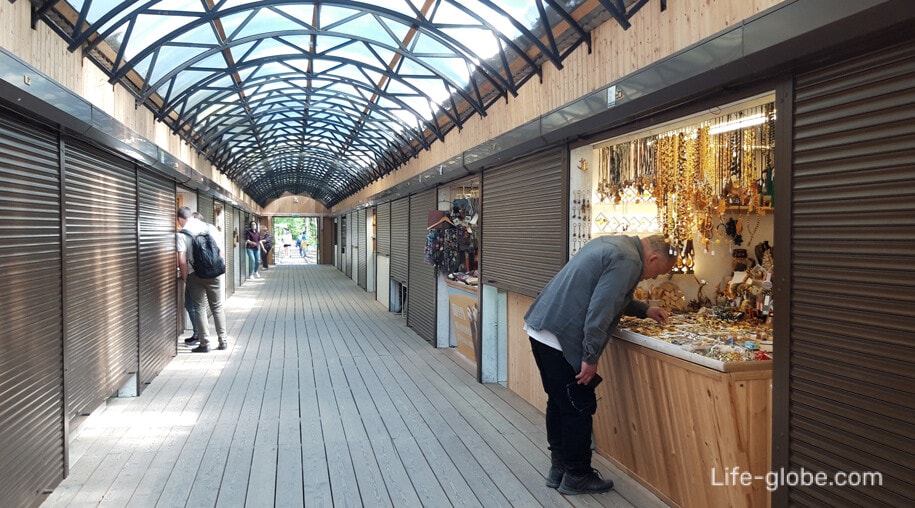
The route "Efa Height" is laid from the sea to the bay and includes two segments:
1. Ascent to the observation platforms of the Efa height
2. An unoccupied section, in the direction of the Baltic Sea (opposite from the height of the Efa), along which you can reach the sandy sea coast.
The route gives an idea of the relief of the peninsula, about the main types of landscape-sand and forested dunes, as well as about the sea and the bay.
Route to the observation platforms of the Efa height
The tourist route to the height of Efa passes along the south-western slope of the Walnut dune, planted with forest at the end of the 19th century.
Wooden decking is provided along the route. There is a pavilion for the exhibition of birds of prey of the Bushido Club, which accepts wounded birds of prey (saker falcon, black kite, owl) for treatment and rehabilitation.
Information stands are also installed along the route.
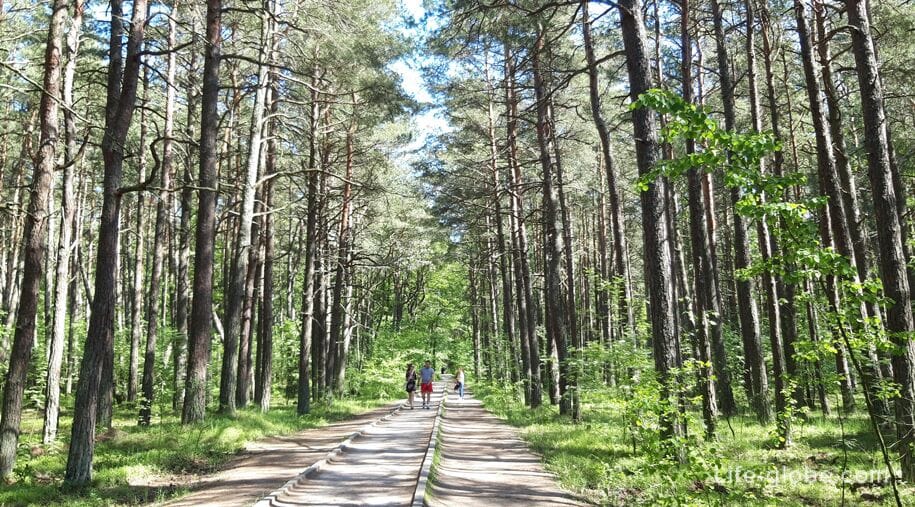
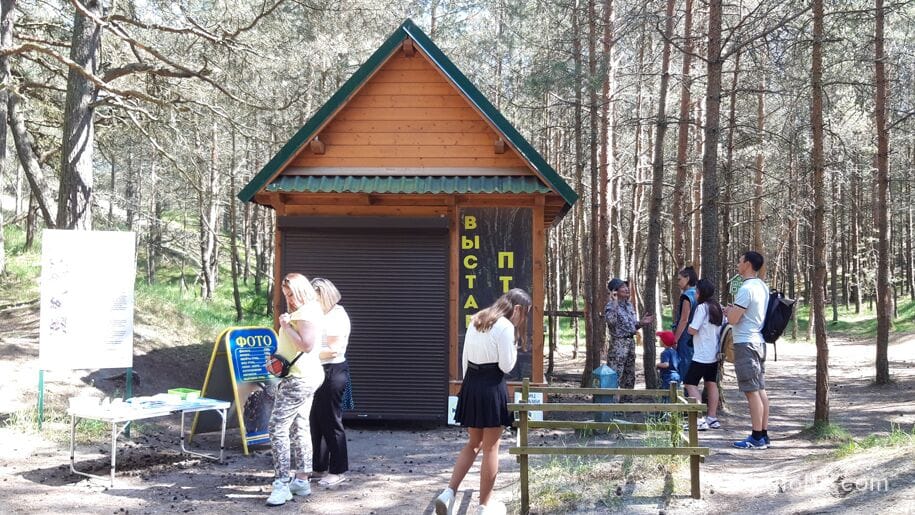
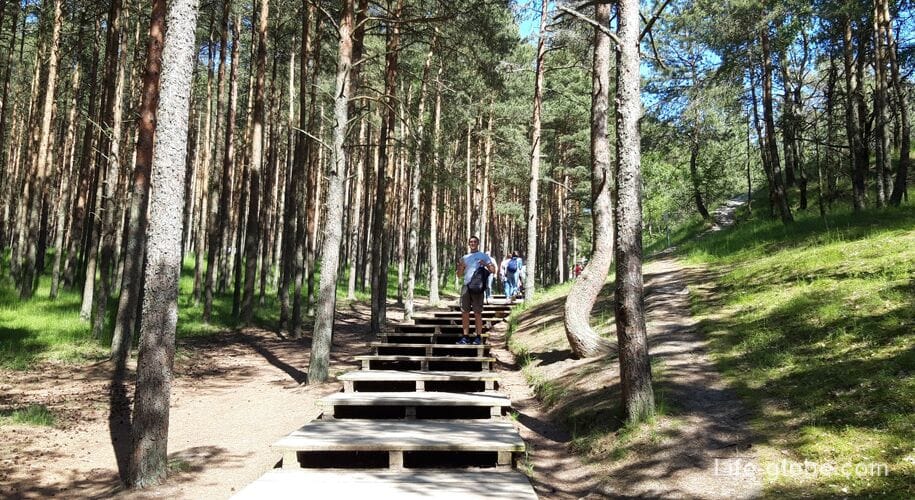
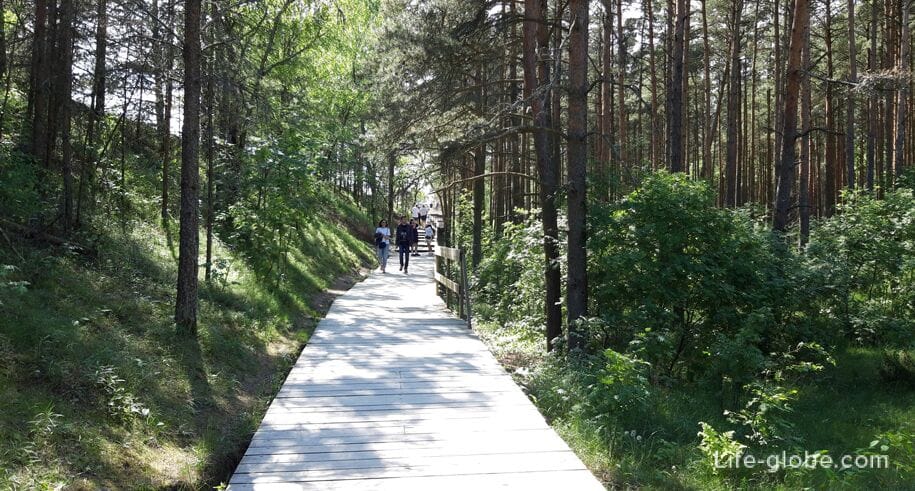
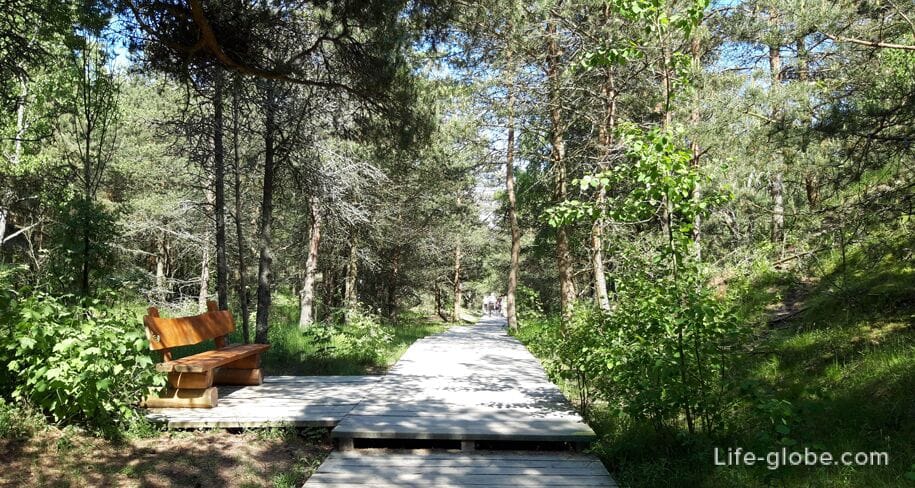
The top of the trail is located on the border of two types of dunes: Orekhovaya and Staroderevenskaya (the former German name Altdorferberg) - "green", secured by forest planting, and "white" open sand, continuing to move towards the Curonian Lagoon.
At the end of the route, on one of the ridges of the Orekhovaya dune, at an altitude of about 50 meters, there are several observation platforms with beautiful panoramic views, giving the opportunity to get acquainted with the variety of landscapes of the Curonian Spit.
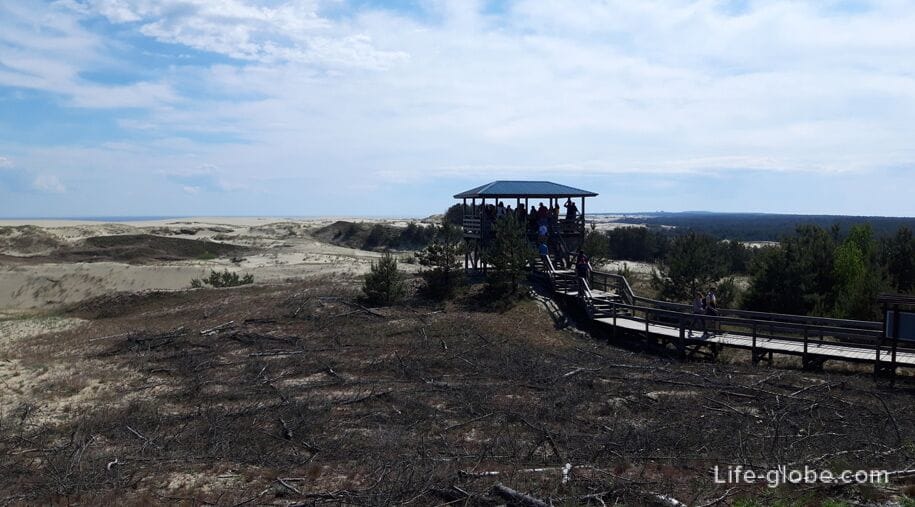
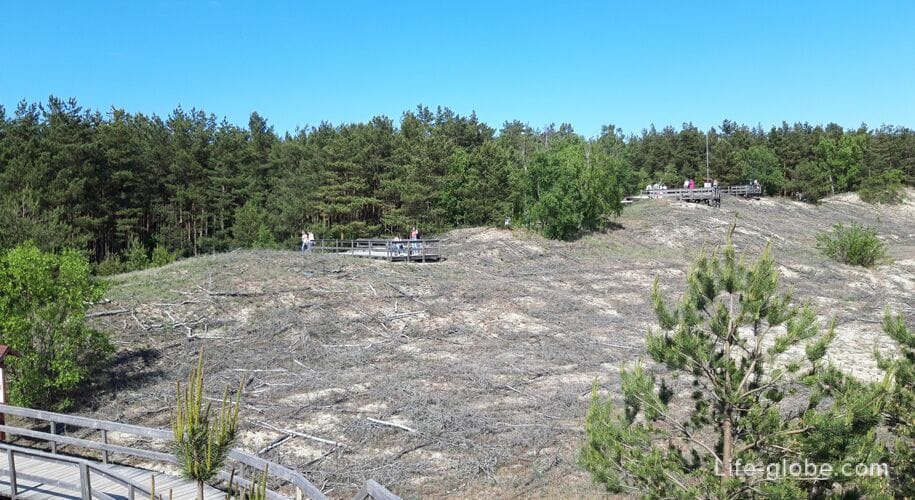
From the observation decks, you can see the Baltic Sea and the Curonian Lagoon, areas covered with forest and massifs of loose sands, as well as the village of Morskoye.
The first observation deck

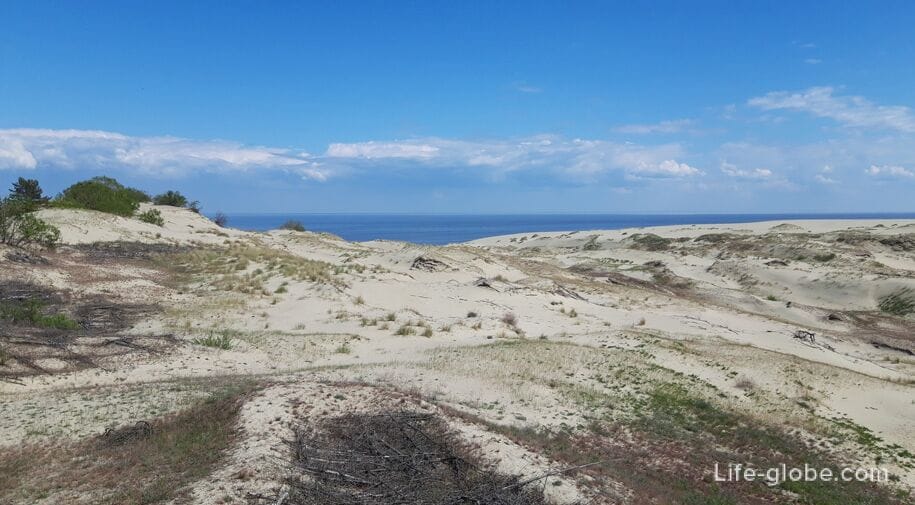
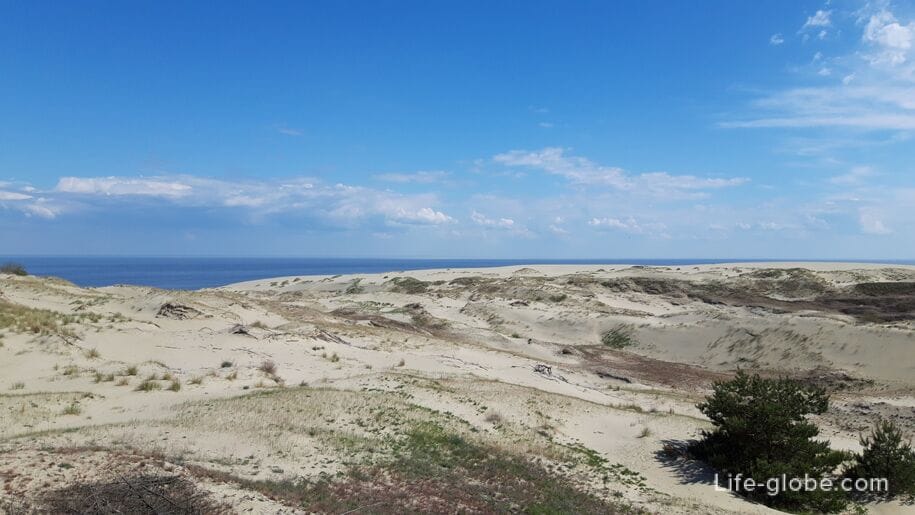
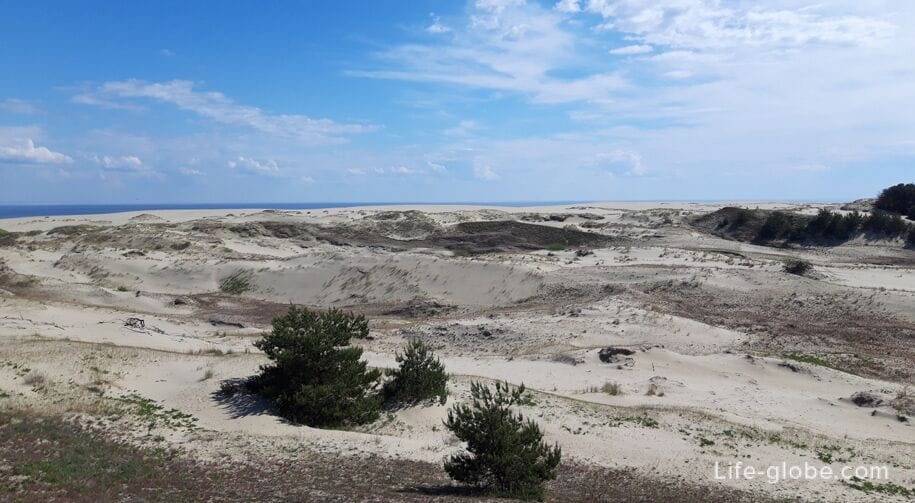
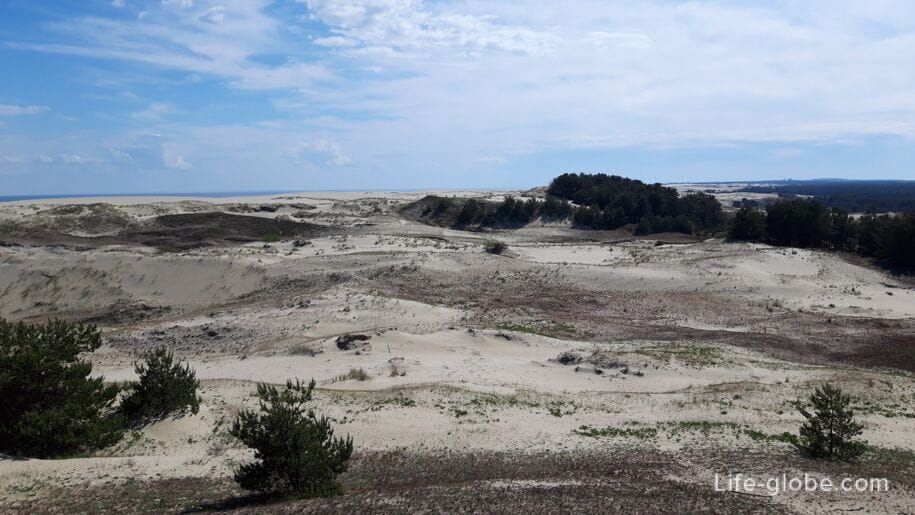
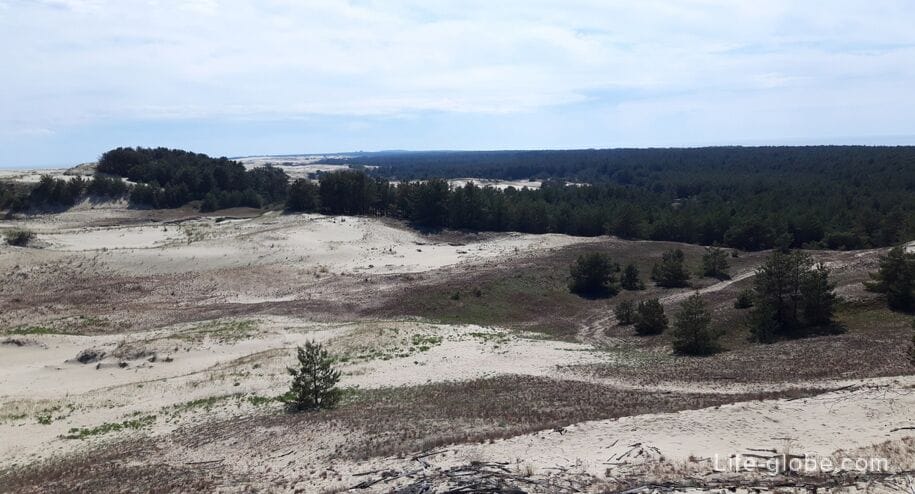
The second observation deck


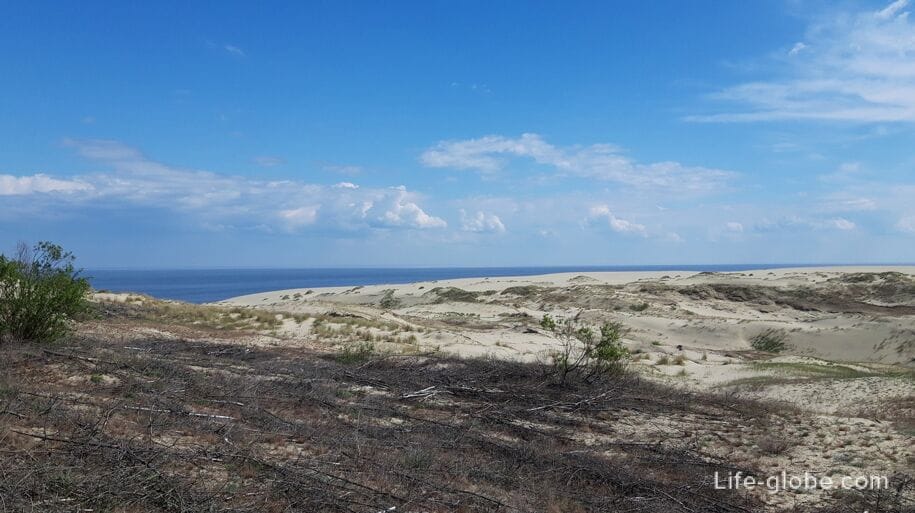
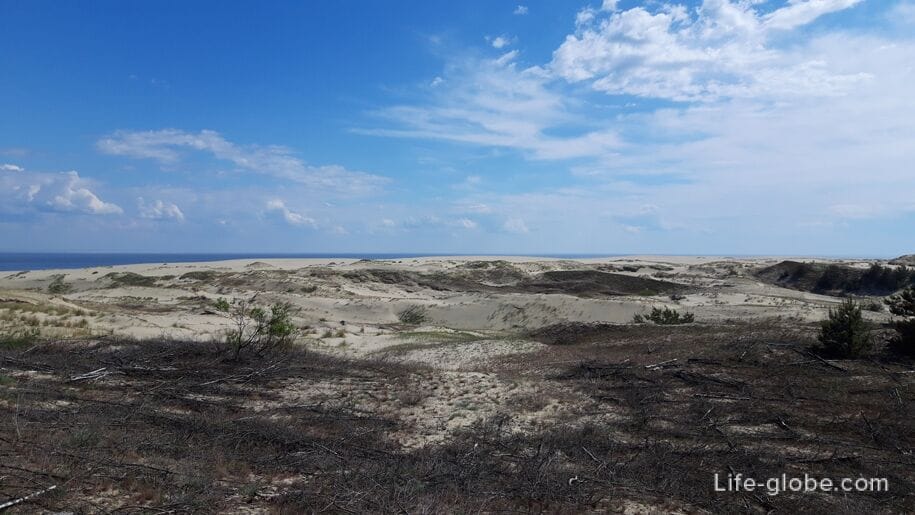
Third observation deck
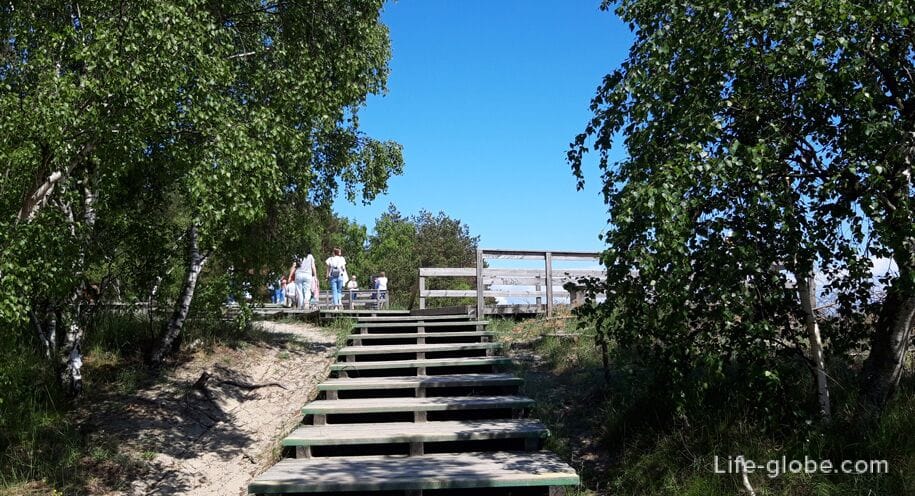


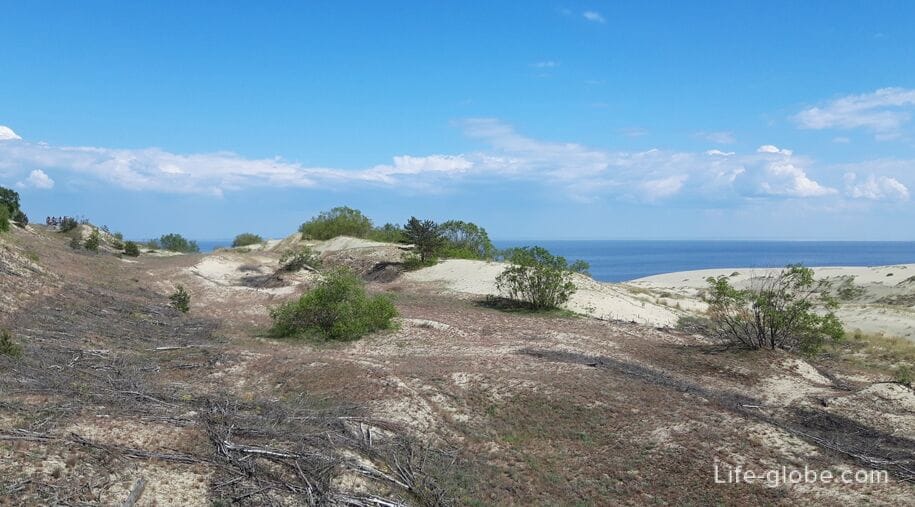
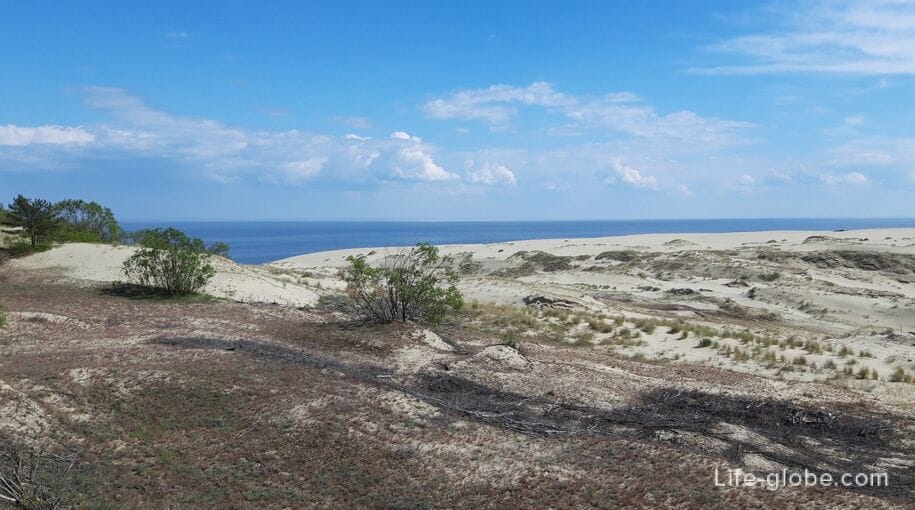
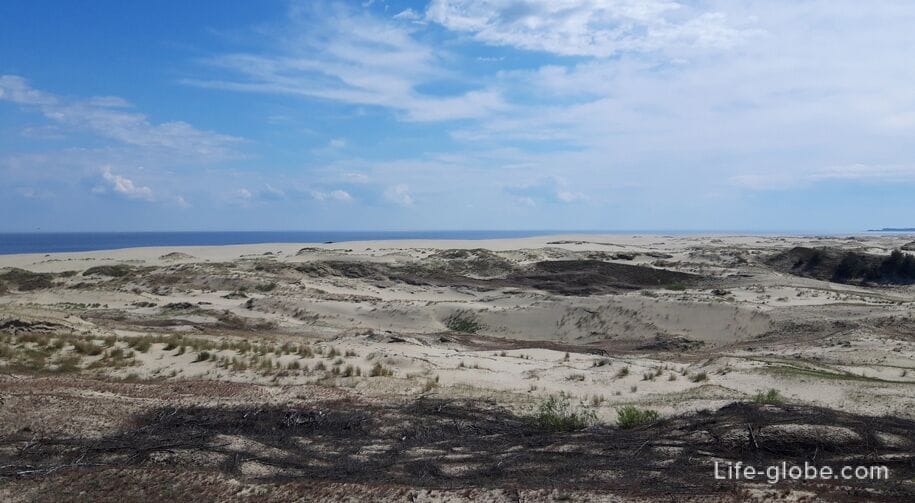
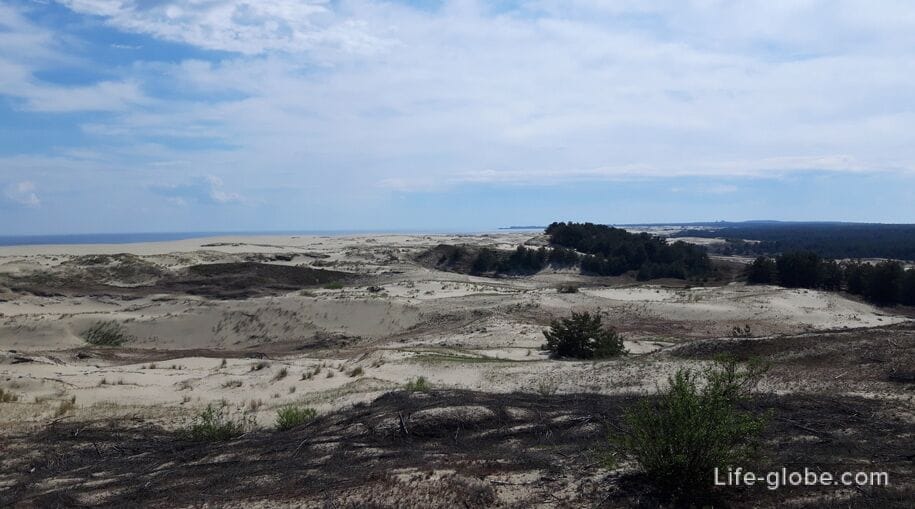

The fourth observation deck
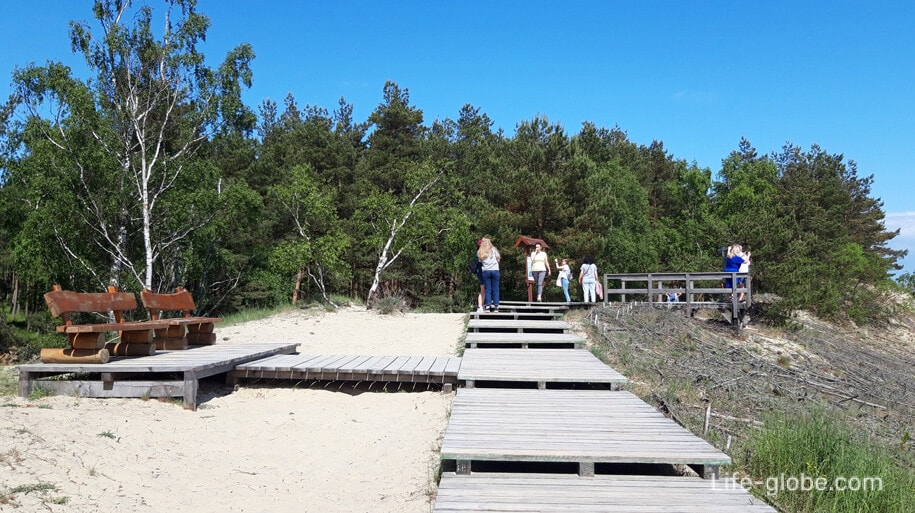
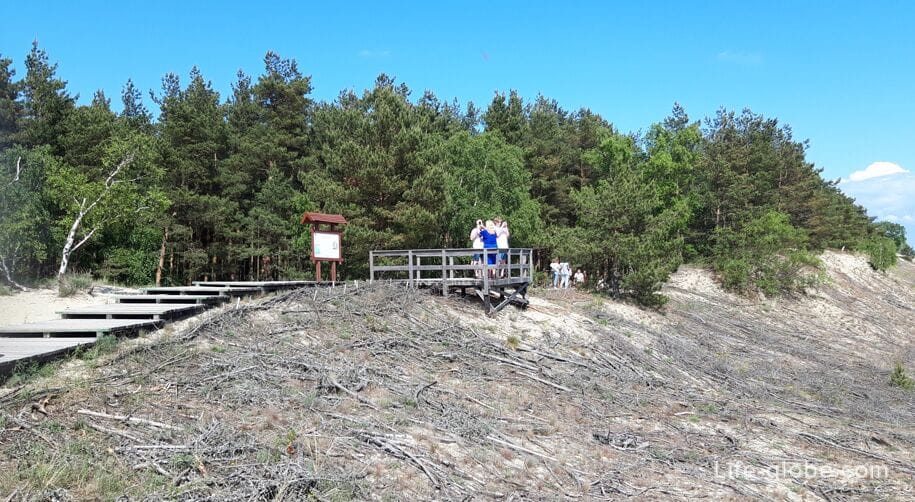
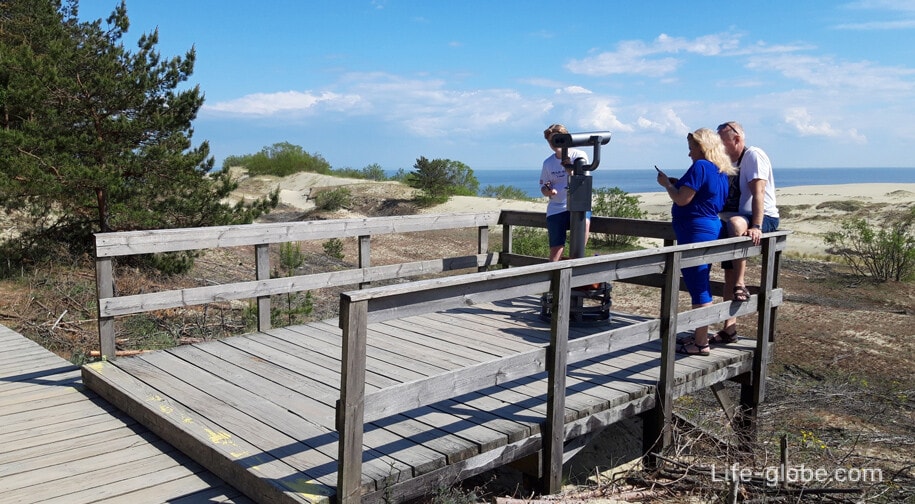
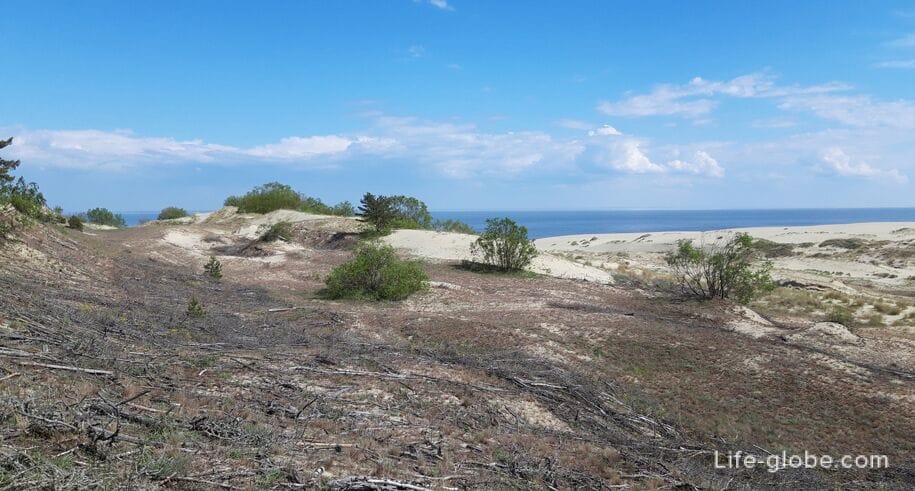
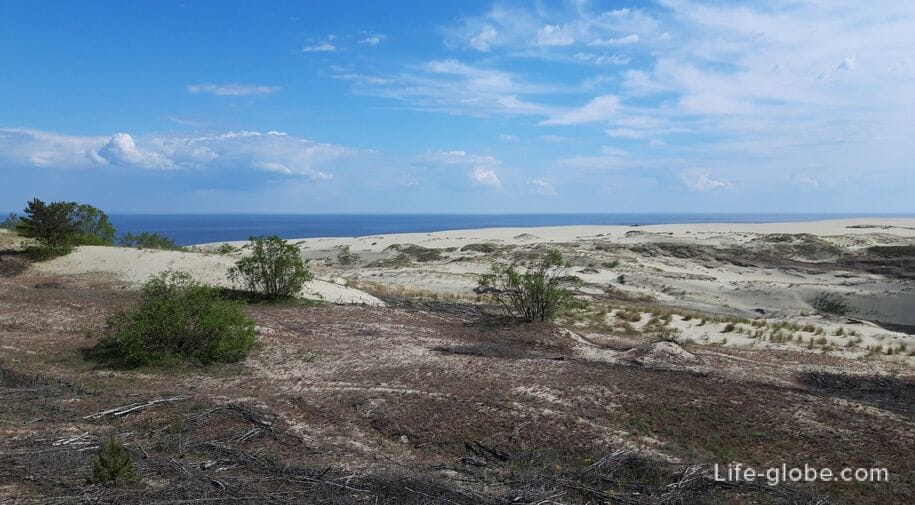
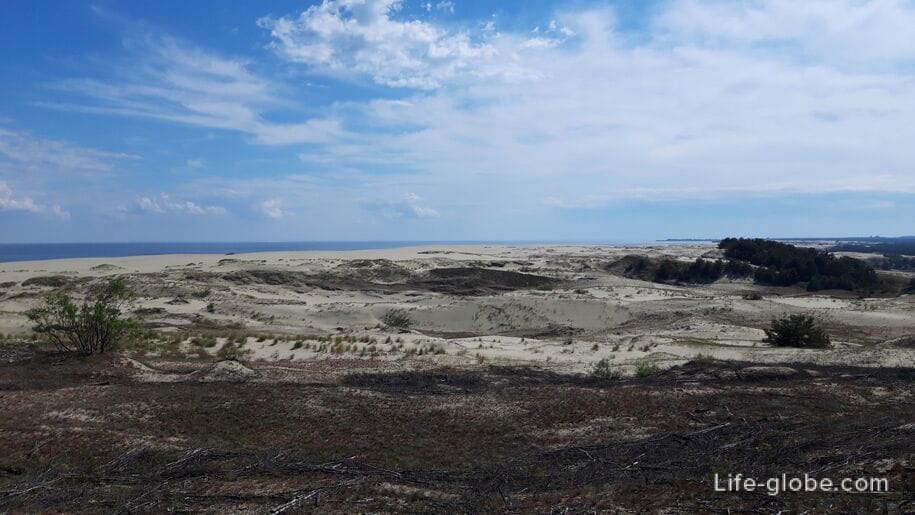
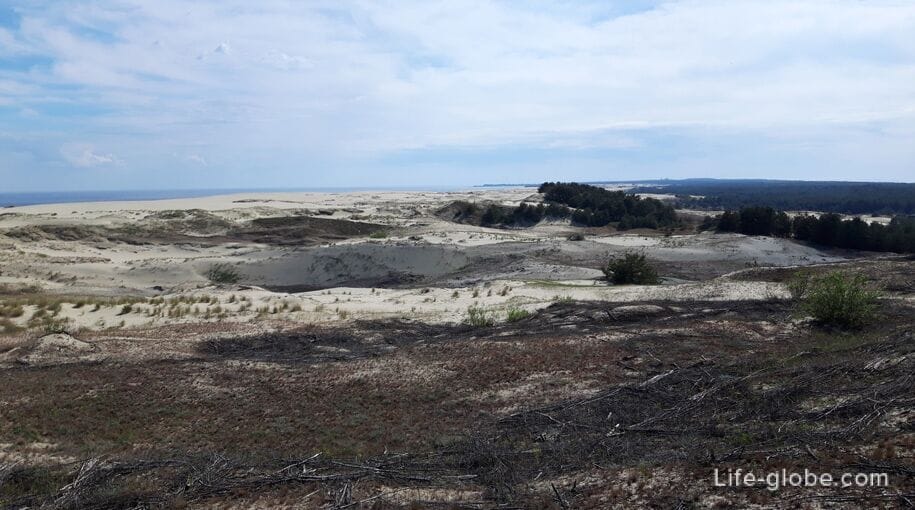
The fifth, the highest observation deck, giving the most beautiful panoramic views
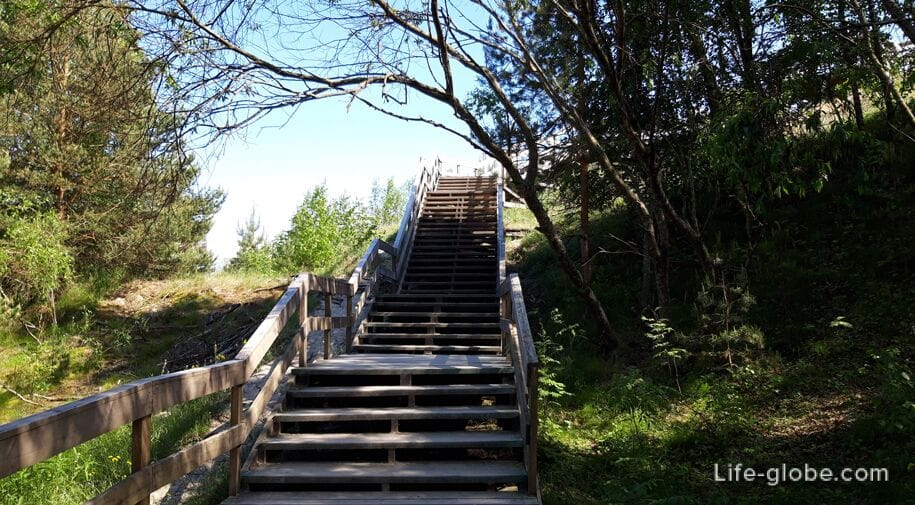
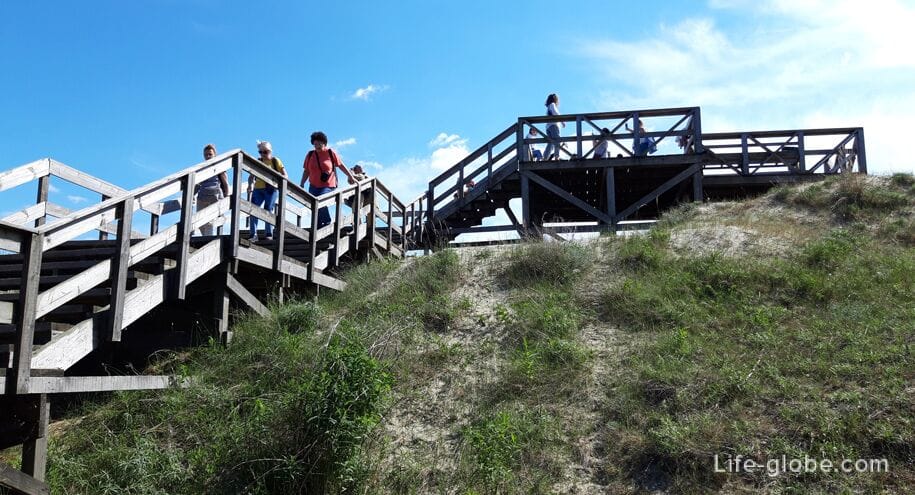
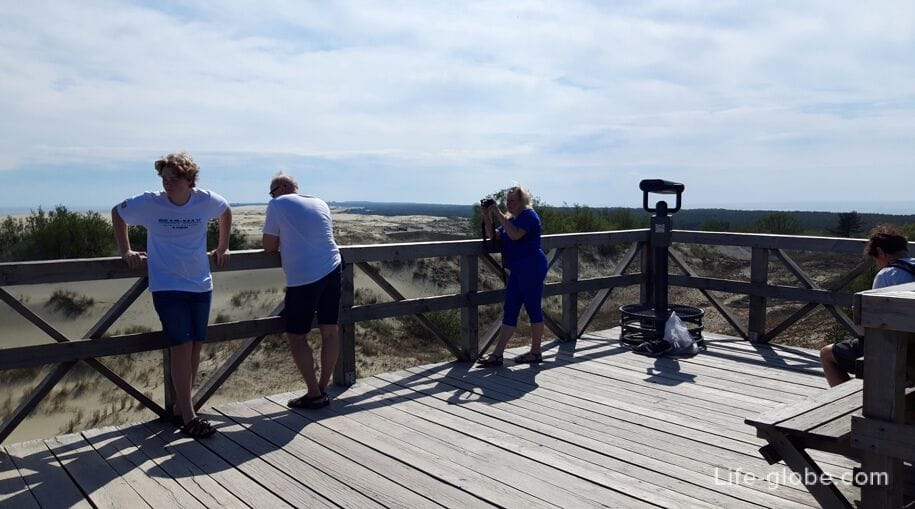
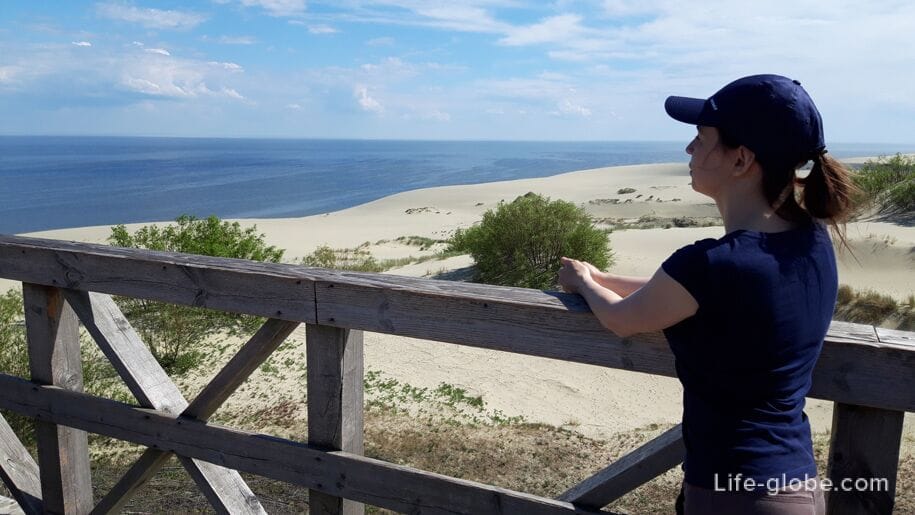
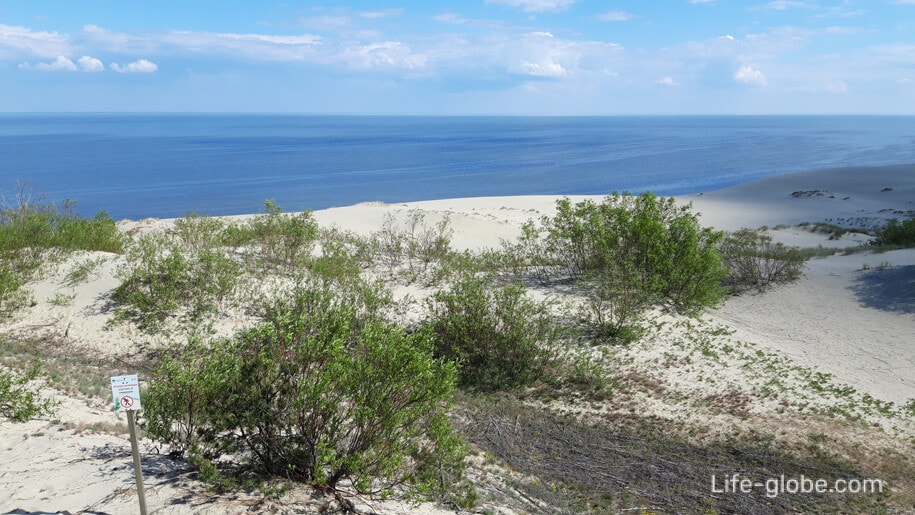

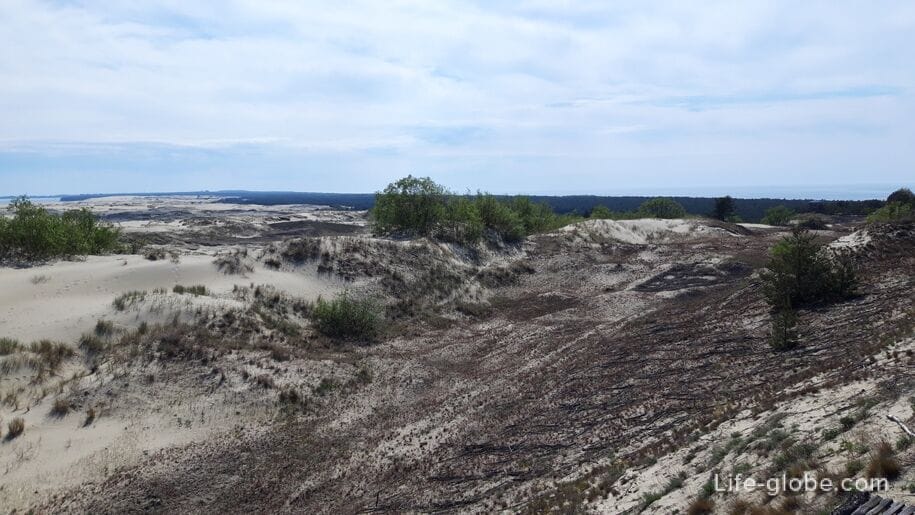
From this site, the village of Morskoye is visible, the "green" Orekhovaya dune and the Curonian Lagoon are clearly visible
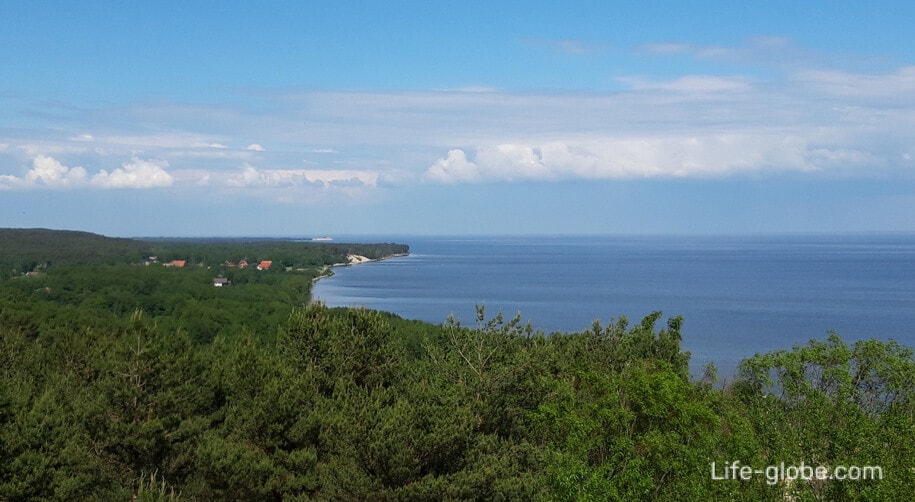
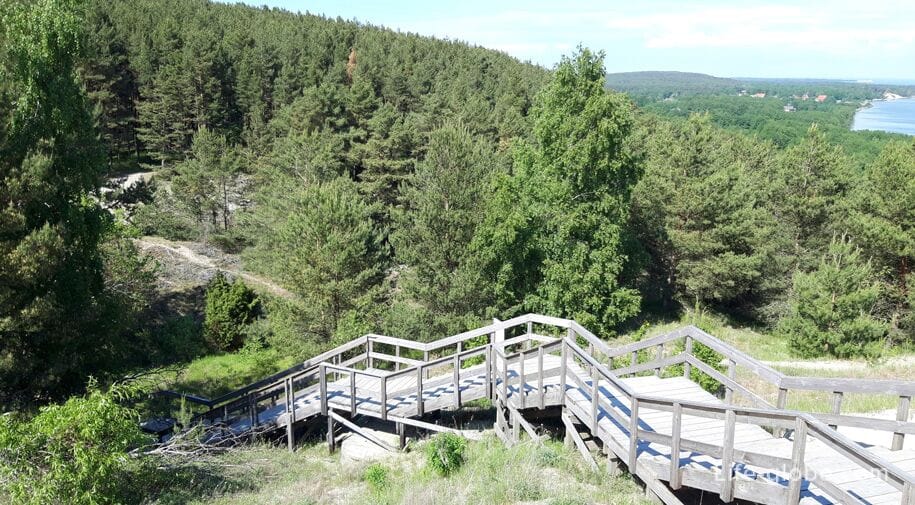
Route to the Baltic Sea
Returning from the height of Efa to the road, you can go in the opposite direction - to the Baltic Sea.
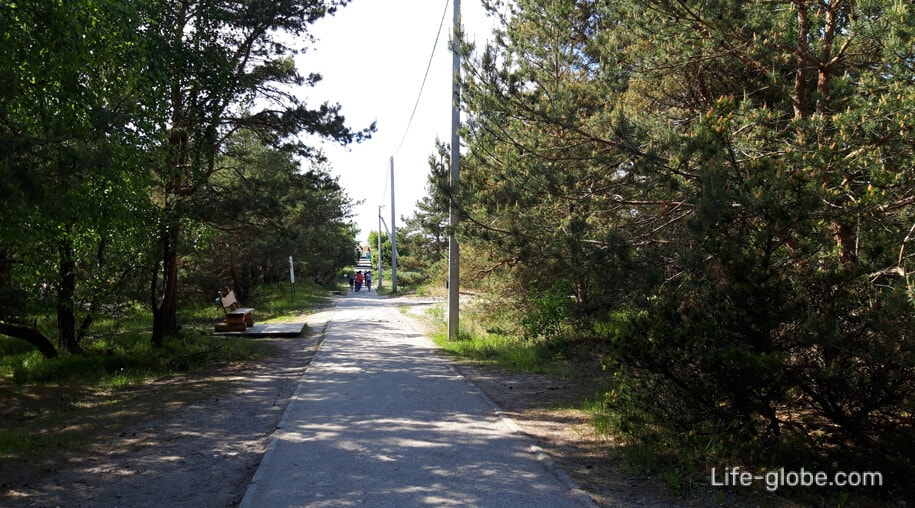
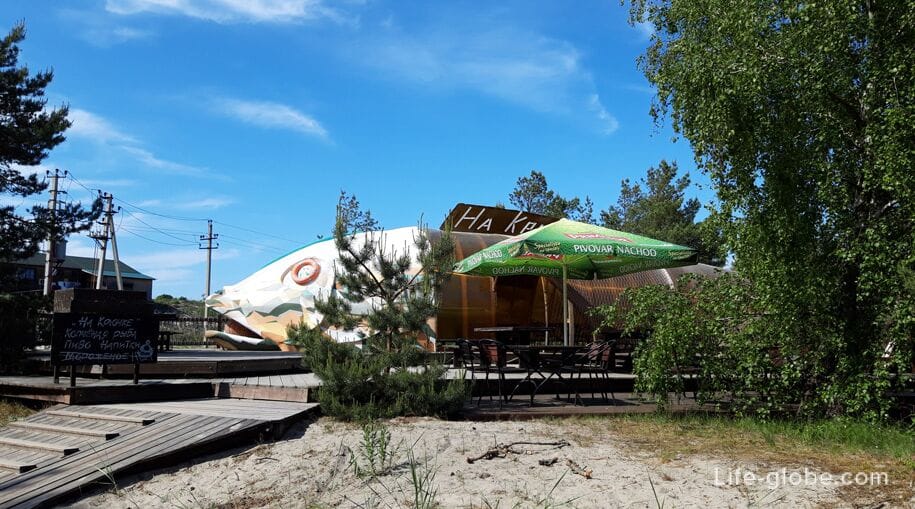
A wooden staircase leads to the sandy coast and the sea, and on the sandy coastal protective rampart (avanduna), which resembles a protective wall, there is a restaurant with an outdoor terrace and a viewing platform with benches.
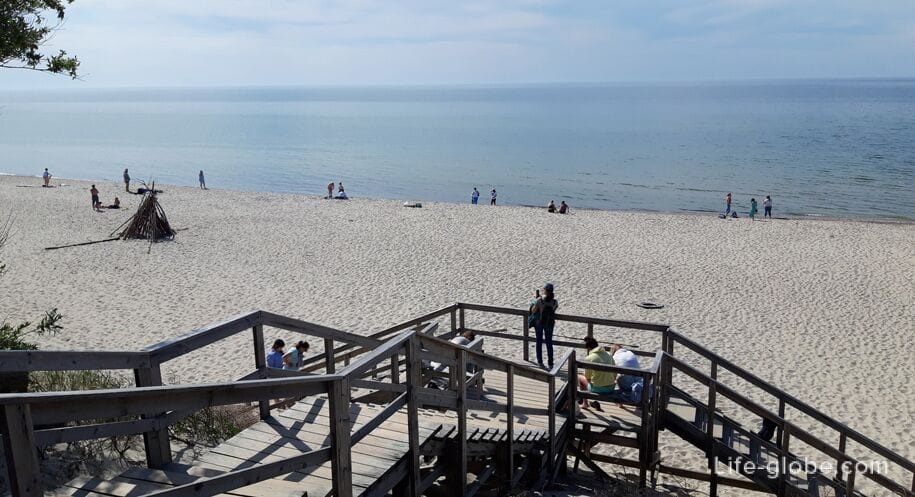

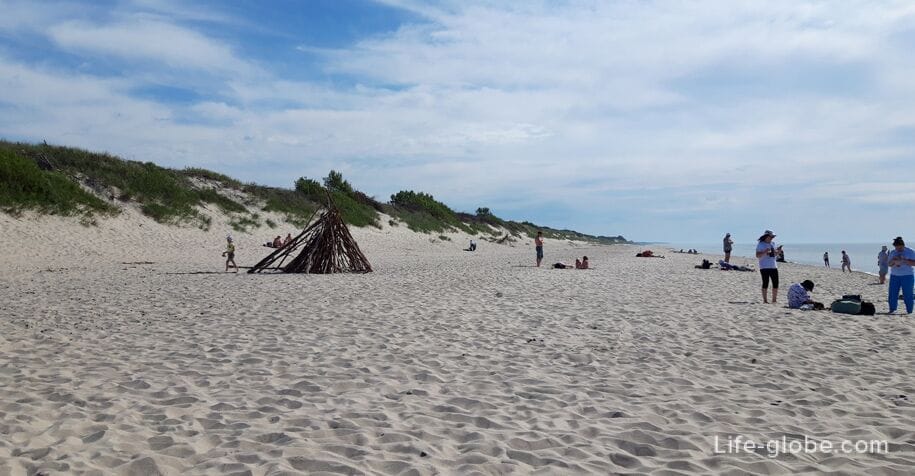
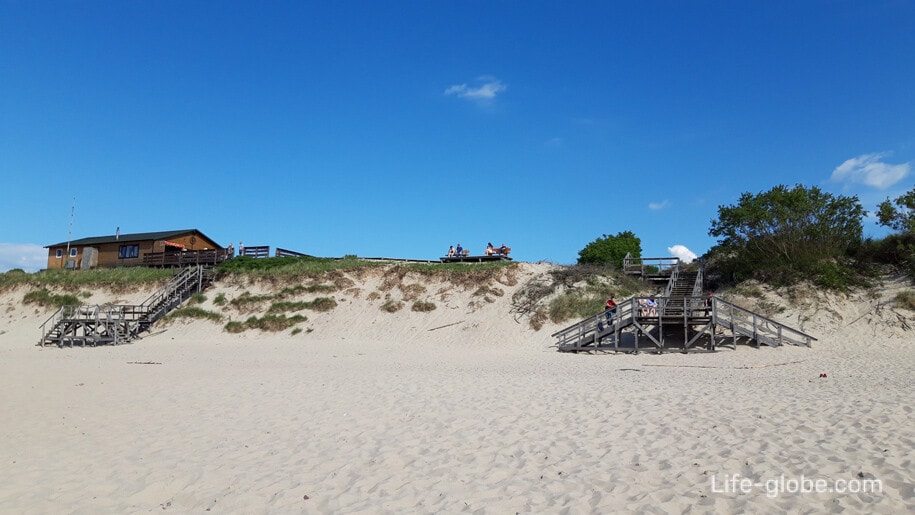
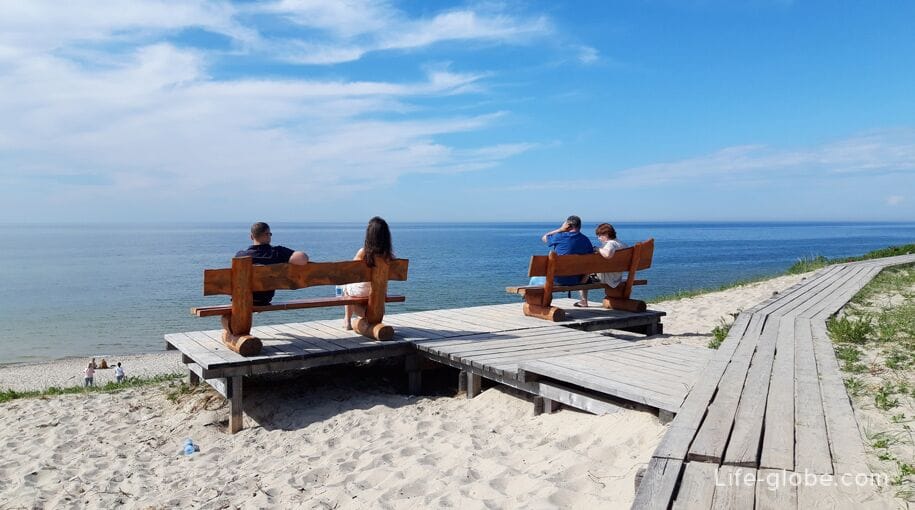
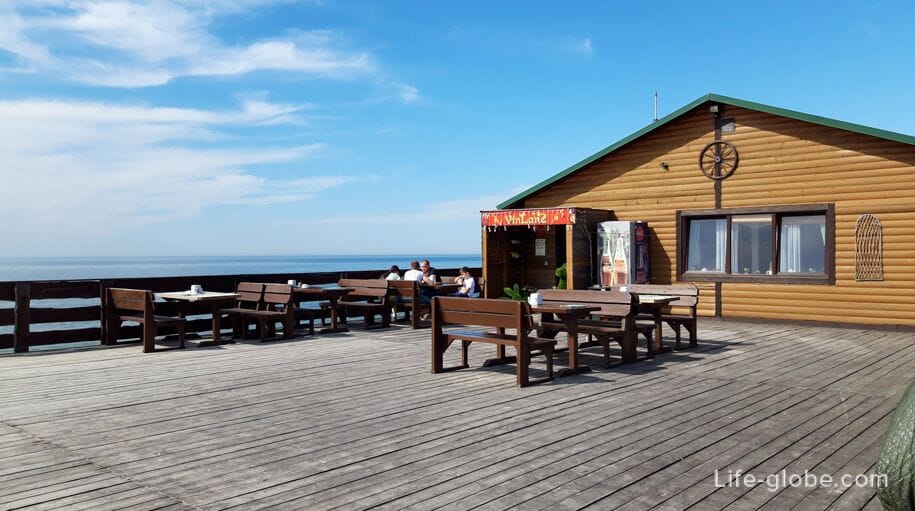
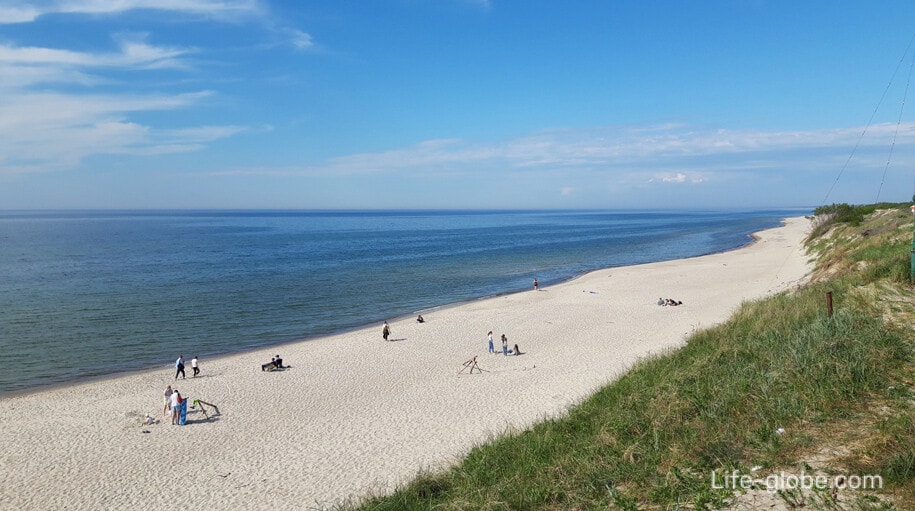
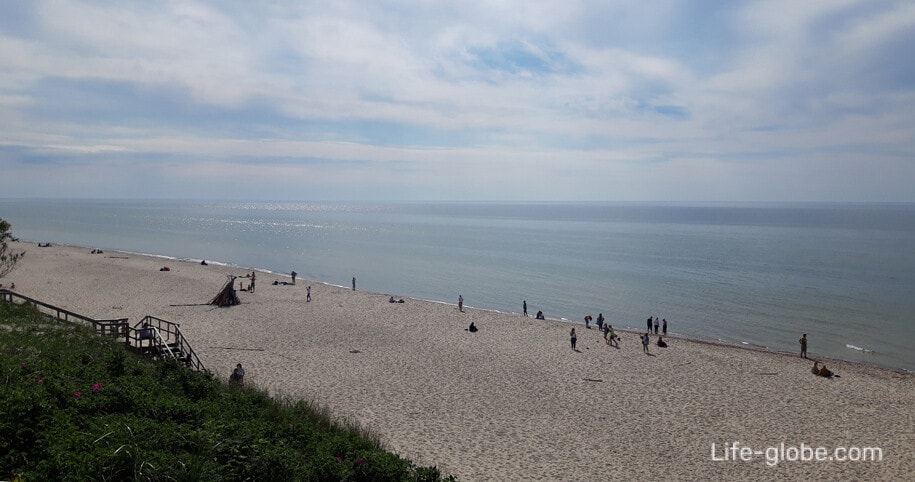

Avanduna
In any place of the Curonian Spit, in order to get to the sea, it is necessary to overcome a sand wall, which resembles a protective wall and protects the rest of the peninsula from storm waves and a constantly blowing westerly wind - this is avandyuna.
Avanduna is not an entirely natural formation. It was systematically created for many years, starting in 1803, on the site of natural coastal beach dunes, some of which were part of the modern avandune.
Today, the avandune has a different width - from 10 to 70 meters and a height - from 3 to 12 meters.
Its sea windward slope is steep, short, smooth, and sometimes stepped. The leeward, "inner" slope of the avandune is more gentle, long and wavy.
The avandyuna was created as follows: about 50-60 meters from the water's edge, pegs about 70 centimeters high were driven into the sand in two rows. When the space between them was filled with sand, the second row of barriers began to be driven in from above. In autumn, the formed shaft was planted with grasses that bind the sand and are not afraid of sand drifts. The grass entwined the sand with a dense network of shoots and roots, preventing it from blowing out. After two or three years, willow and other shrubs were planted in the resulting substrate.

The history of the name "Eph Height"
In the 19th century, the Petsch dune (Orekhovaya) was rapidly moving towards the Curonian Lagoon and foreshadowed a "sand catastrophe" that would lead to the filling of the houses of the village of Pillkoppen (now Morskoe) with sand.
In the fight against the "sand catastrophe", many people worked on fixing nomadic dunes (moving sands), but the main role in this difficult struggle was played by the German forester Wilhelm Franz Efa - it was he who introduced the successful method of fixing dunes.
Since 1864, Franz Efa was the royal dune inspector for reforestation and simultaneously served as the manager of the Kranz resort (now the resort city of Zelenogradsk).
To fix the high dunes, Efa proposed a new method: pine seedlings with a lump of earth were planted in low rectangular cages made of brushwood or reeds. Later, instead of ordinary pine, he began to widely use mountain pine seedlings.
Large-scale work on fixing the Pest dune ended in 1891 and saved 18 houses of the village of Pillkoppen from falling asleep with sand.
In gratitude, the residents of the village named one of the peaks of the Pest dune (62-meter) - the height of Efa, and the inspector himself received the honorary title "winner of nomadic dunes".
After that, Efa secured other dunes of the peninsula. He worked until his old age, retired a year before his death. He was buried in 1904 in the village of Rossitten (now the village of Rybachy of the Curonian Spit).

Map-diagram of the route "Efa Height"
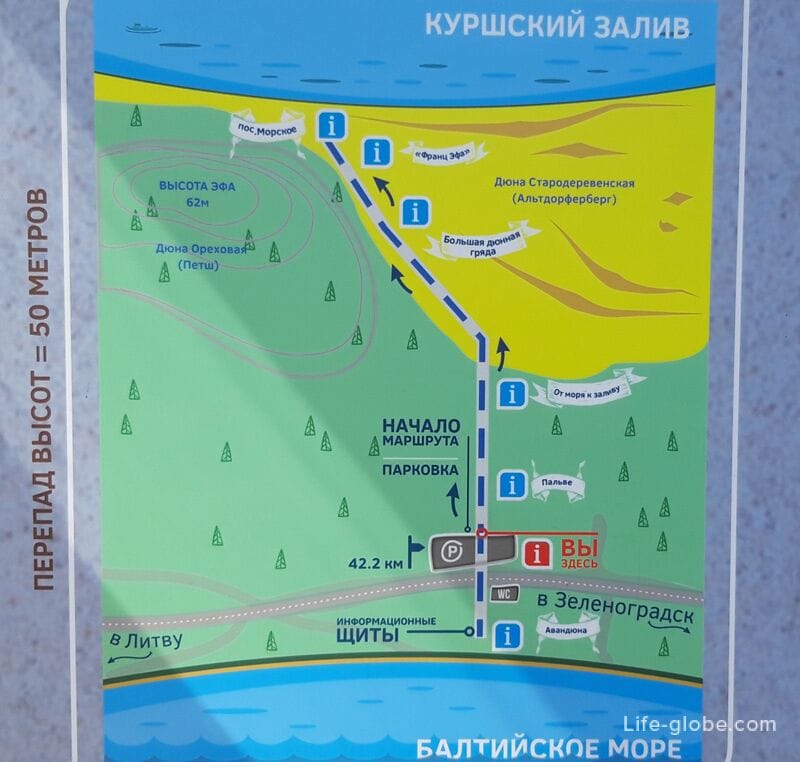
Practical information
The visit to the Efa height and the approach to the Baltic Sea are free (free of charge).
Coordinates of the beginning of the route "Eph Height": 55°13'20.0" N 20°53'29.7" E (55.222216, 20.891572).
You can get to the Curonian Spit, including the route "Efa Height", by taxi or car from anywhere in the Kaliningrad region, as well as by buses from the center of Kaliningrad, from Zelenogradsk and Svetlogorsk (including Otradnoye and Pionerskiy resort).
More information about all the ways to get to the Curonian Spit, about the entrance to the spit and how to move along it, can be found here →
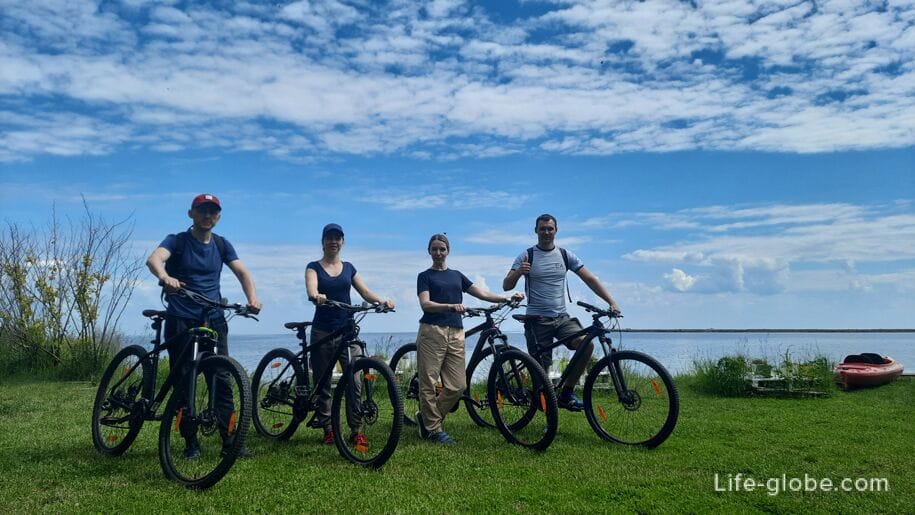
You can also visit the Curonian Spit, including the height of Eph, with an excursion
Excursions to the Curonian Spit from Kaliningrad
Excursions to the Curonian Spit from Svetlogorsk
Excursions to the Curonian Spit from Zelenogradsk
You can stay on the Curonian Spit in the villages of Lesnoy, Rybachy and Morskoe. There are hotels, apartments, holiday homes, camp sites.
All accommodation facilities in the village of Lesnoy can be viewed and booked here
All accommodation facilities in the village of Rybachy can be viewed and booked here
All accommodation facilities in the village of Morskoye can be viewed and booked here






